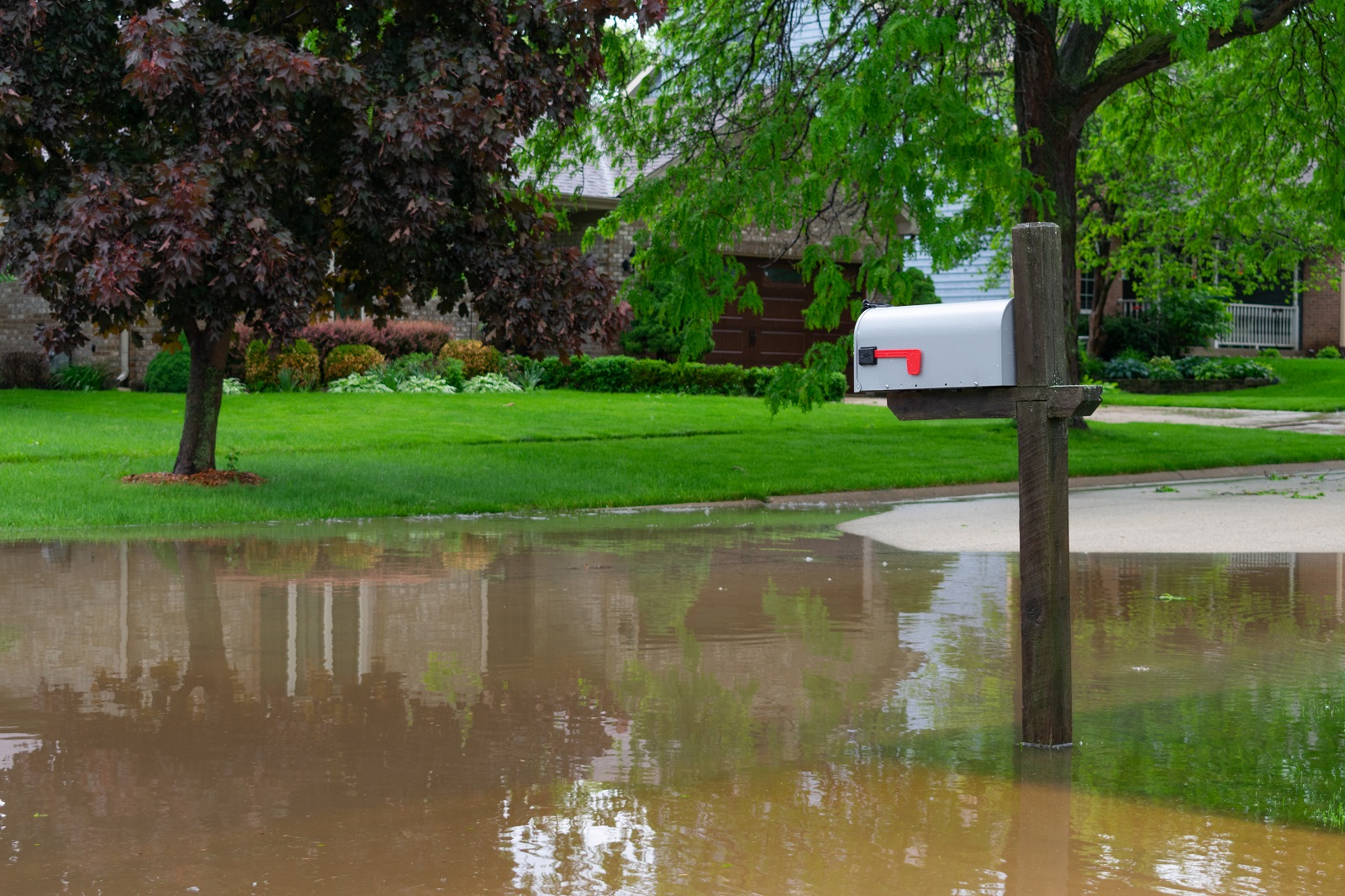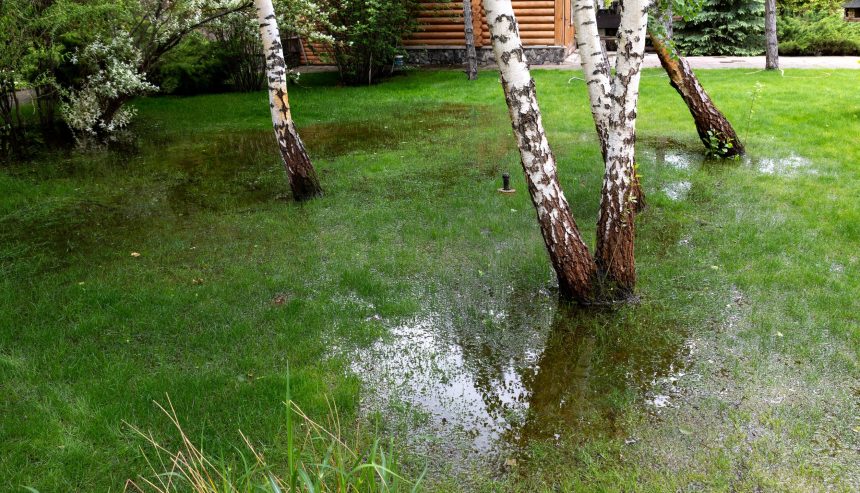When warmer temperatures arrive, so does the melting snow, spring rain, and unfortunately, water-related home hazards. If you’ve ever dealt with spring flooding before, you know how quickly a cozy home can become a stressful mess. That’s why understanding how to prevent Spring flood damage in Bloomington is essential for any homeowner in Central Illinois.
In this blog, we’ll walk you through actionable, easy-to-understand prevention tips to help you get ahead of flooding before it becomes a costly headache. Whether you live in a historic home or a newly built subdivision, this guide offers something for everyone.
Table of Contents
1. Know Your Flood Risk
The first step to avoiding Spring flood damage in Bloomington is understanding your property’s risk level. Is your home in a floodplain? Do you live near creeks, rivers, or retention ponds? The City of Bloomington and FEMA offer floodplain maps and risk assessments that can help.

Even if you’re not in a high-risk zone, spring storms and rapid snowmelt can cause unexpected flooding. Awareness is your first line of defense.
2. Inspect Your Gutters and Downspouts
Clogged or damaged gutters can cause water to overflow and pool around your foundation — a recipe for water damage. Each spring, make it a habit to:
- Remove leaves and debris
- Check for cracks or sagging
- Ensure downspouts direct water at least 5 feet away from your home
This simple step can drastically reduce your risk of Spring flood damage in Bloomington, especially during sudden downpours.
3. Install or Maintain a Sump Pump
A sump pump is one of the most effective tools for preventing basement flooding. If you already have one, test it at the start of spring to ensure it’s working properly.
If you don’t have one and your basement tends to collect water, consider installing a sump pump with a battery backup system. A functioning sump pump could be the difference between a dry home and costly Spring flood damage in Bloomington.

4. Seal Foundation Cracks and Windows
Water will always find the path of least resistance, and tiny cracks in your foundation or around basement windows offer just that. Take time each spring to:
- Seal any visible cracks with epoxy
- Inspect and replace weather stripping
- Install window well covers
These small repairs go a long way in keeping moisture out and preventing Spring flood damage in Bloomington — especially in older homes.
5. Keep Your Yard Graded Properly
Does water pool near your foundation during storms? That’s a red flag.
Make sure your yard slopes away from your home so that rainwater naturally drains outward. You can build up low spots with soil or contact a landscaping professional for proper grading.
This will not only protect your home but also prevent potential erosion — a major contributor to Spring flood damage in Bloomington.
6. Install Flood Sensors and Water Alarms
Today’s smart home technology can offer peace of mind. Flood sensors and water alarms can detect leaks early and alert you via smartphone. This gives you time to act quickly and minimize damage.
Place sensors in vulnerable areas like:
- Basements
- Under sinks
- Near water heaters or appliances
This added layer of protection can be a game-changer when it comes to avoiding Spring flood damage in Bloomington.
7. Review Your Insurance Policy
Most homeowners insurance does not cover flood damage — a fact many don’t realize until it’s too late. Before the season starts, review your policy and consider adding flood insurance if you’re in a vulnerable area.
Spring floods are unpredictable, and coverage can make all the difference when it comes to repairs and restoration after a water event. It’s a financial shield against unexpected Spring flood damage in Bloomington.
What to Do If You Experience Flooding
Even with the best prevention, floods can still happen. If you find water seeping into your basement or rising from your drains, take these steps immediately:
- Shut off electricity to the affected area
- Move valuables to higher ground
- Avoid walking through standing water
- Call a professional water restoration team — fast
PuroClean of Bloomington is available 24/7 to respond to your emergency. Our certified experts use state-of-the-art drying and cleanup equipment to minimize damage and help restore your home to its original condition. When it comes to Spring flood damage in Bloomington, time is everything — and our response is swift.
Frequently Asked Questions
Q: Is Bloomington, IL really at risk for spring flooding?
A: Absolutely. The combination of snowmelt, heavy spring rain, and aging infrastructure makes flooding a very real concern for many neighborhoods across Bloomington.
Q: Can I clean up minor flood damage myself?
A: For small spills, yes. But if water has soaked into walls, floors, or electrical systems, it’s best to leave it to the pros to avoid mold growth or structural issues.
Q: How fast should I respond to spring flooding?
A: Immediately. The longer water sits, the more damage it causes. Prompt action reduces repair costs and health risks.
Q: Does PuroClean of Bloomington help with insurance claims?
A: Yes, we work directly with most insurance providers and can help streamline the claims process during a stressful time.
Q: What sets PuroClean of Bloomington apart from others?
A: Local expertise, fast response, transparent pricing, and compassionate service. We’re not just a service provider — we’re your neighbors, and we’re here to help.
Your Trusted Partner for Spring Flood Damage in Bloomington
At PuroClean of Bloomington, we understand that Spring flood damage in Bloomington is more than just an inconvenience — it’s a disruption to your daily life, your property, and your peace of mind.
We don’t just dry out your basement. We provide comprehensive water restoration services, including:
✅ 24/7 Emergency Response
✅ Water Extraction & Structural Drying
✅ Mold Remediation
✅ Odor & Contaminant Removal
✅ Full-Service Rebuilds
✅ Insurance Coordination
Don’t wait until it’s too late. Get proactive. Protect your home. And if the worst happens, know that PuroClean of Bloomington is ready to help.



